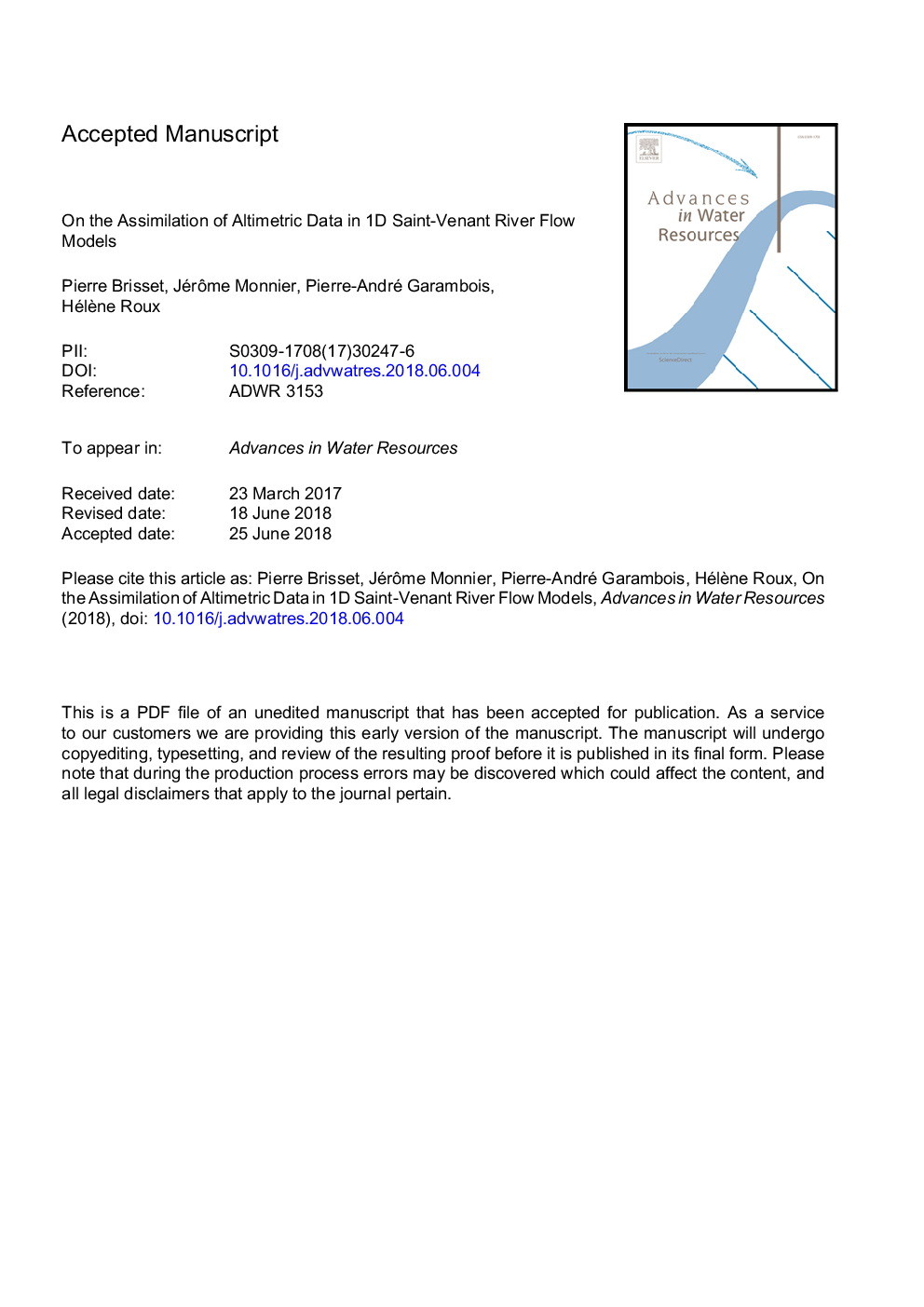| Article ID | Journal | Published Year | Pages | File Type |
|---|---|---|---|---|
| 8883245 | Advances in Water Resources | 2018 | 27 Pages |
Abstract
Given altimetry measurements, the identification capability of time varying inflow discharge Qin(t) and the Strickler coefficient K (defined as a power-law in h the water depth) of the 1D river Saint-Venant model is investigated. Various altimetry satellite missions provide water level elevation measurements of wide rivers, in particular the future Surface Water and Ocean Topography (SWOT) mission. An original and synthetic reading of all the available information (data, wave propagation and the Manning-Strickler's law residual) are represented on the so-called identifiability map. The latter provides in the space-time plane a comprehensive overview of the inverse problem features. Inferences based on Variational Data Assimilation (VDA) are investigated at the limit of the data-model inversion capability : relatively short river portions, relatively infrequent observations, that is inverse problems presenting a low identifiability index. The inflow discharge Qin(t) is inferred simultaneously with the varying coefficient K(h). The bed level is either given or inferred from a lower complexity model. The experiments and analysis are conducted for different scenarios (SWOT-like or multi-sensors-like). The scenarios differ by the observation frequency and by the identifiability index. Sensitivity analyses with respect to the observation errors and to the first guess values demonstrate the robustness of the VDA inferences. Finally this study aiming at fusing relatively sparse altimetric data and the 1D Saint-Venant river flow model highlights the spatiotemporal resolution lower limit, also the great potential in terms of discharge inference including for a single river reach.
Related Topics
Physical Sciences and Engineering
Earth and Planetary Sciences
Earth-Surface Processes
Authors
Pierre Brisset, Jérôme Monnier, Pierre-André Garambois, Hélène Roux,
